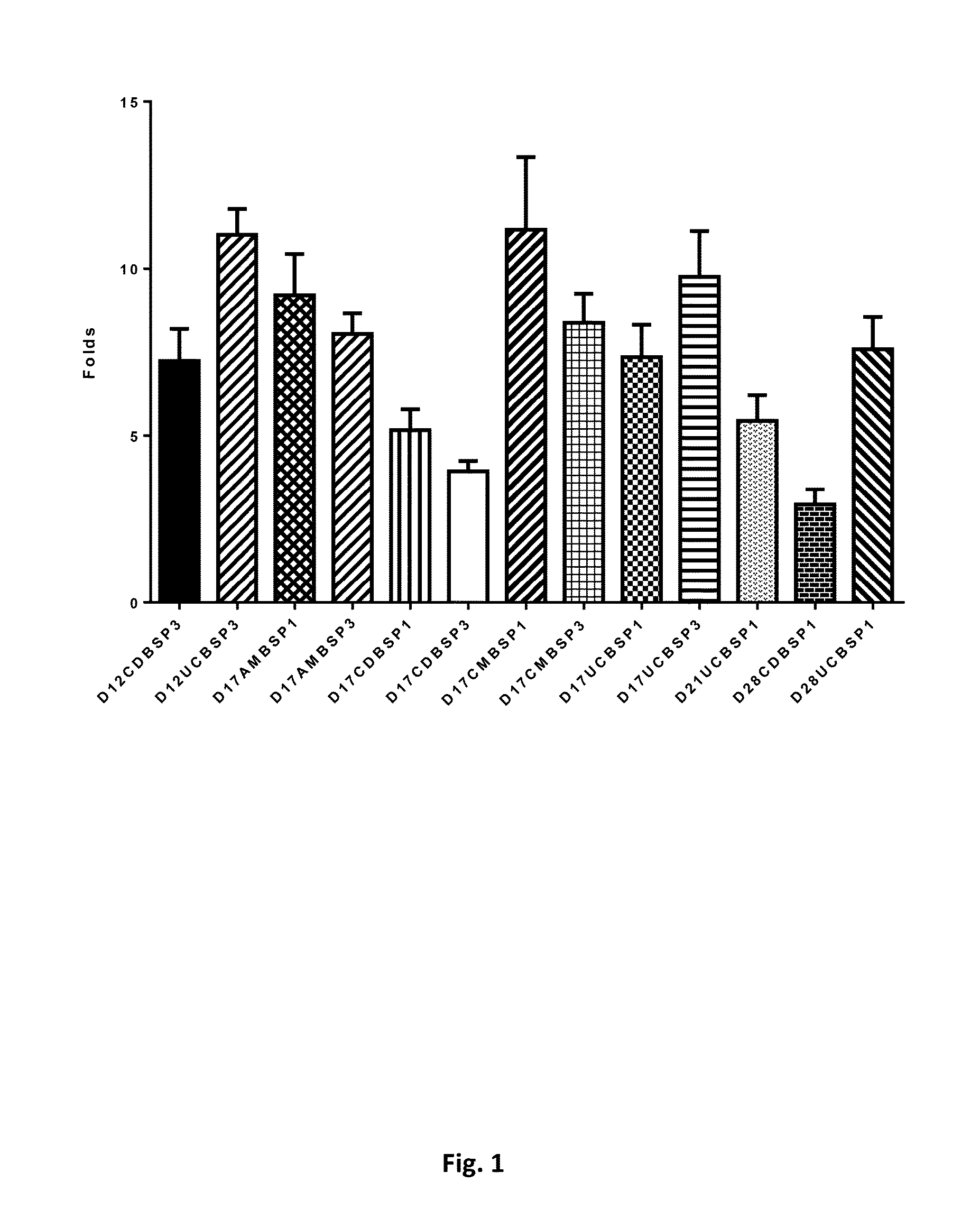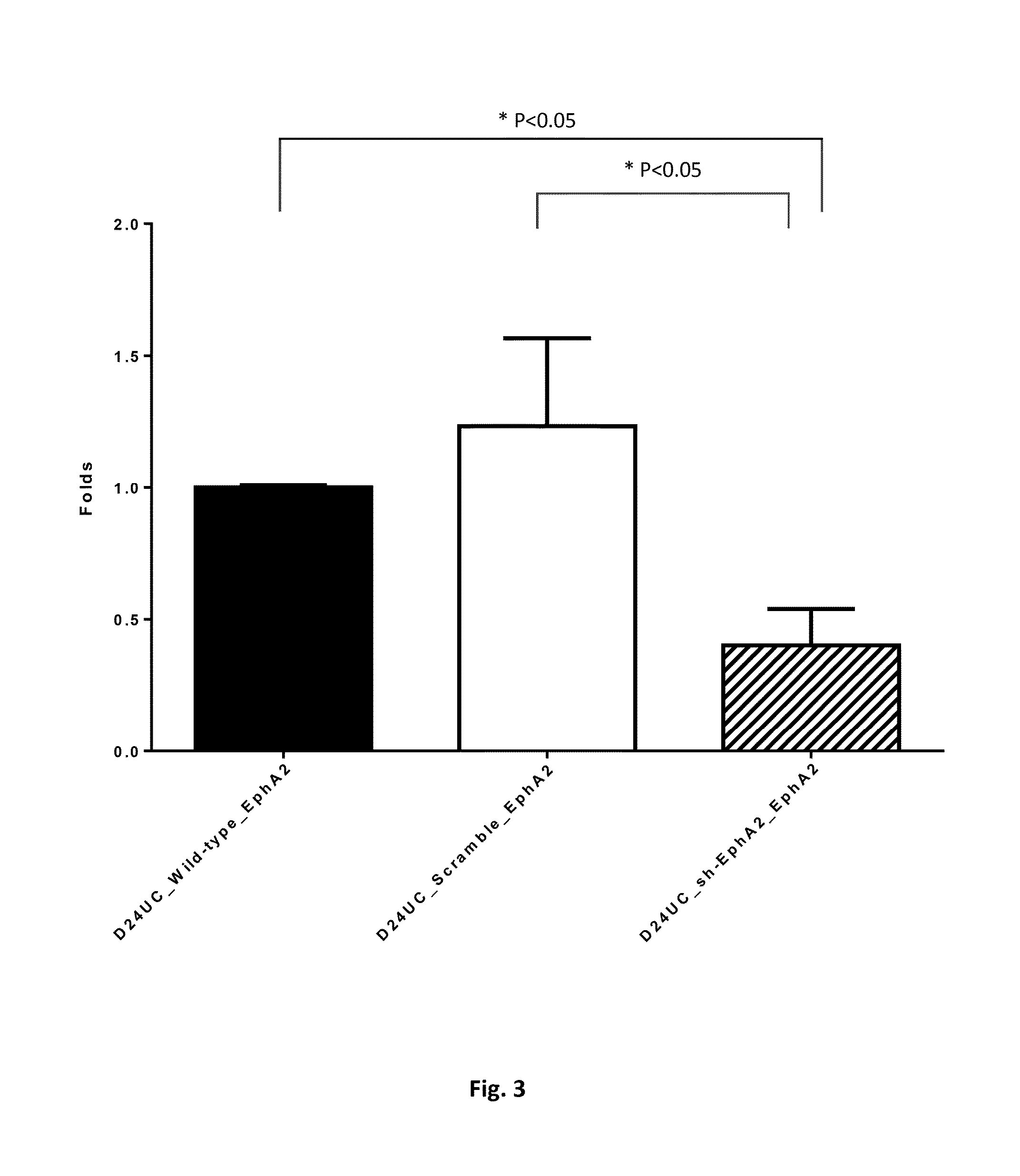Method of distinguishing mesenchymal stem cells
- Summary
- Abstract
- Description
- Claims
- Application Information
AI Technical Summary
Benefits of technology
Problems solved by technology
Method used
Image
Examples
example 1
The Immunophenotypic Characterization of the Placenta-Derived Mesenchymal Stem Cells (MSCs) and Fibroblasts
[0042]Full-term placentas (n=8) were collected after obtaining written informed consent from donors. MSCs were derived from amniotic membrane (AM), chorionic disk (CD), chorionic membrane (CM), and umbilical cord (UC). Placenta-derived cells were cultured, expanded and maintained in α-MEM with FBS and basic FGF at 37° C., saturating humidity and 5% CO2, and were sub-cultured when cells reached 80% confluence, later phenotypically characterized by flow cytometry. In the process of immunostaining subject to flow cytometry, cells were incubated with the antibodies following manufacturer's instructions. Nonspecific IgG of the corresponding class served as the negative control. Cell suspensions were analyzed on a flow cytometer (BD Biosciences FACSCanto II) with Flowjo 7.6.1 software.
[0043]We assessed expression of CD11b, CD19, CD34, CD45, CD73, CD90, CD105, HLA-DR, and EphA2. Flow ...
example 2
The Immunophenotypic Characterization of the EphA2-Sorted Placenta-Derived Mesenchymal Stem Cells (MSCs)
[0044]a. Flow Cytometry Analysis of EphA2-Enriched MSCs Sorted by Magnetic-Activated Cell Sorting (MACS)
[0045]The MACS method (MACS® Technology, Miltenyi Biotec) allows cells to be separated by incubating with magnetic nanoparticles coated with antibodies against EphA2 surface antigen. Primary culture of MSCs derived from placenta were incubated with the fluorescence conjugated anti-human antibodies against EphA2 and sorted by R-Phycoerythrin (PE) Magnetic Particles according to manufacturer's instructions. Flow cytometry analysis of MACS sorted MSCs at P0 revealed that cell population could become homogeneous in 100% CD73 positive, 97.2˜99.5% CD90 positive, 96.0˜99.9% CD 105 positive and 96.6˜100% EphA2 positive expression since passage 0 (see Table 2 below), demonstrating that EphA2 sorting via antibodies conjugated magnetic beads could dramatically improve the MSC purity from P...
example 3
Quantitative Real-Time PCR Evaluation of EphA2 Transcript in Placenta-Derived Mesenchymal Stem Cells (MSCs) and Fibroblasts
[0048]Total RNA from 64 populations of placenta-derived cells (n=8, including passage 1 and passage 3, from AM, CD, CM, UC, 4 different parts of a placenta) and Human Foreskin Fibroblasts (neonatal, PC501A-HFF, SBI) were isolated using the Direct-zol miniprep Kit (Zymo Research Corporation, CA, USA). The complementary DNA (cDNA) was synthesized with Transcriptor First Strand cDNA Synthesis Kit (Roche, Basel, Switzerland). Then Quantitative RT-PCR was performed using the Roche Universal ProbeLibrary System with a LightCycler480 II (Roche, Basel, Switzerland) according to the manufacturer's instructions.
[0049]We assessed expression of EphA2 by quantitative real-time PCR in order to compare placenta-derived multipotent MSCs and fibroblasts. Gene expression was normalized to the endogenous gene glyceraldehyde-3-phosphate dehydrogenase expression in the different cel...
PUM
| Property | Measurement | Unit |
|---|---|---|
| Fraction | aaaaa | aaaaa |
| Responsivity | aaaaa | aaaaa |
| Purity | aaaaa | aaaaa |
Abstract
Description
Claims
Application Information
 Login to View More
Login to View More - R&D
- Intellectual Property
- Life Sciences
- Materials
- Tech Scout
- Unparalleled Data Quality
- Higher Quality Content
- 60% Fewer Hallucinations
Browse by: Latest US Patents, China's latest patents, Technical Efficacy Thesaurus, Application Domain, Technology Topic, Popular Technical Reports.
© 2025 PatSnap. All rights reserved.Legal|Privacy policy|Modern Slavery Act Transparency Statement|Sitemap|About US| Contact US: help@patsnap.com



